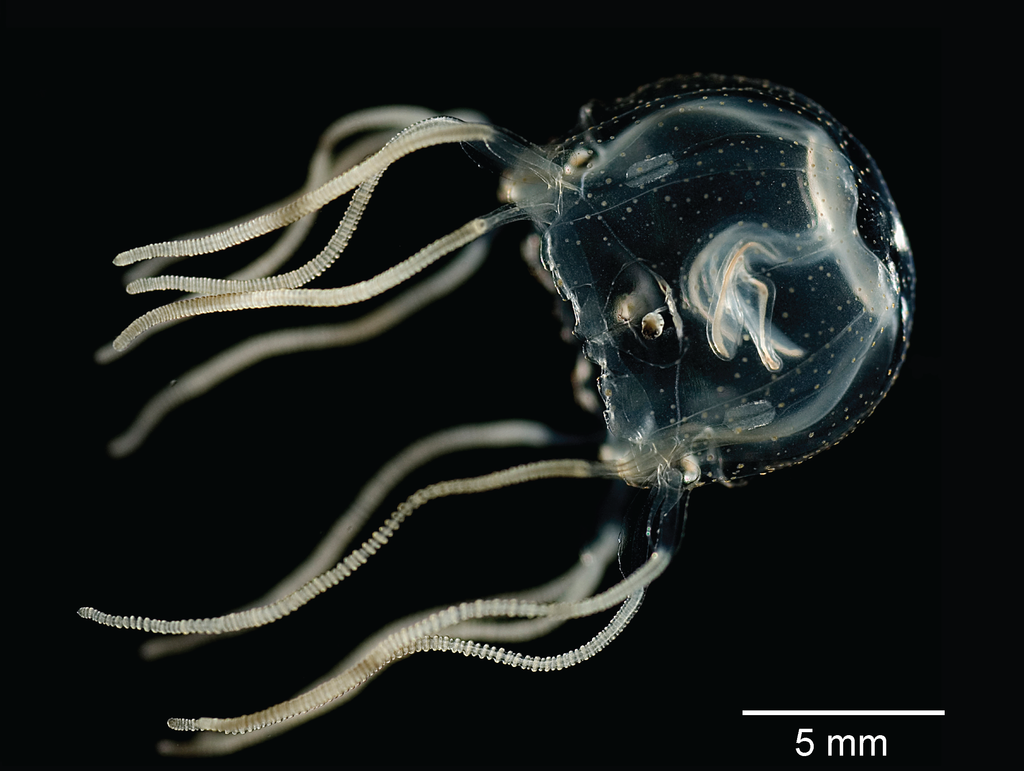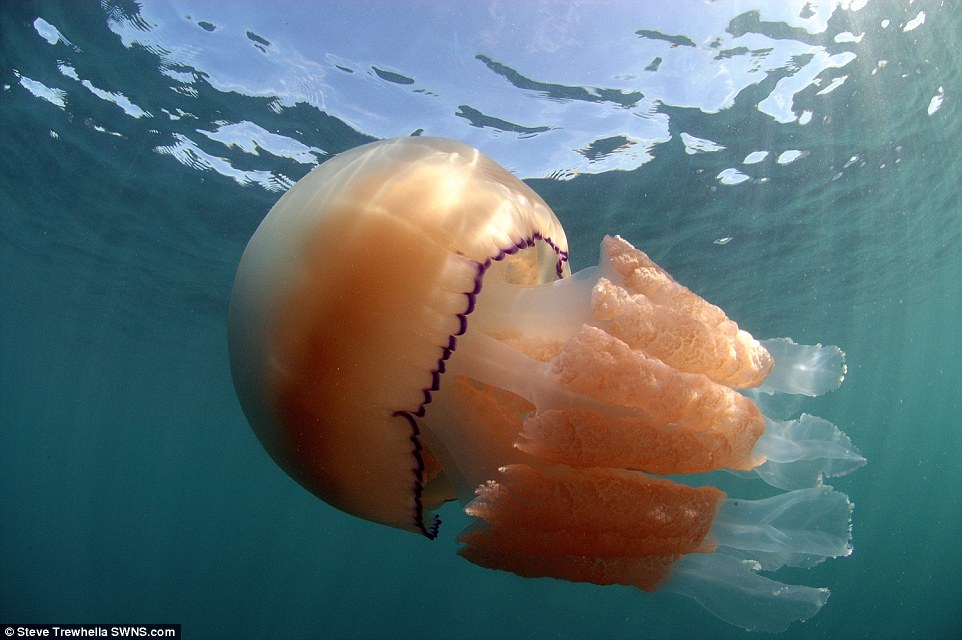Physics in the animal world: cubes and their eyes

Tripedalia cystophora. Source: DOI : 10.1371 / journal.pone.0098870
Many of us consider jellyfish to be primitive creatures that are not too different in complexity from the mucus they resemble. But it is not so. Jellyfish are not badly organized creatures, there are many species of them, among which there are simply amazing creatures. For example, the Portuguese ship - this species has evolved for a long time, before taking the modern form. True, the ship is not exactly a jellyfish, but a species of colonial hydroids from the order Siphonophor, whose colony consists of polypoid and medusoidal individuals. Scientists are known and giant jellyfish, the appearance of which nearby causes trepidation in humans.
But there is an even more amazing type of jellyfish, which, at first glance, is nothing special. We are talking about Kubomedus. It is enough to look closely, and it will immediately become clear that even the behavior of this jellyfish is different from the behavior of other cnidarians . And one of the organs is completely different from everything that other species of these living organisms can boast.

')
Cubo-jellyfish, or box-shaped jellyfish, swim in a special way. In the water, their behavior is very active, it is more like the behavior of fish than jellyfish. It is both about purposeful movement in a certain direction, and about the manifestation of a quick reaction to certain stimuli. This is a small group of cnidarians, which includes about 20 species inhabiting tropical and warm temperate seas with oceanic salinity.
Bell structure
On closer examination, it becomes clear what the matter is. They are distinguished by the shape of a bell, which has a rectangular shape in cross section. The inner space is limited only by the muscular fold of the bell edge. The movement of the jellyfish is caused by the rapid contraction of the bell musculature, as a result of which quite a lot of water is thrown out from under the dome by a powerful jet, which pushes the jellyfish in the opposite direction. Interestingly, the bell musculature allows not only to strengthen the jet, but also to direct it in different directions.

Jellyfish eyes
But the most interesting thing is not even the principle of the jet movement of these jellyfish, but their sensory apparatus. The fact is that each of the four sides of the dome is “equipped” with a sensory organ called the ropals. This system looks like a bunch of eyes of different sizes. And these are actually eyes, and not just appendages similar to eyes. Two types of eyes look especially similar to the eyes of higher animals in cubed jellyfish . Previously, scientists did not understand the purpose of these bodies, although they tried to clarify the function of each. Not so long ago, experts found out that these are really eyes, although they are somewhat specific. The fact is that the image received by the eye is not fixed on the retina too accurately.
And this is hardly a flaw, the omission of nature. The fact is that the cubomejus eyes have a precise refractive index gradient, which allows the medusa to obtain an almost aberration-free image. According to some experts, this once again confirms the idea that some "inventions" in nature appear in very different species as a result of parallel evolution, without any kind of species.
Jellyfish eyes have a number of characteristics that make them look like the eyes of much more complex animals and humans. So, here you can select the cornea, lens, retina, the pigment layer and the iris. The lenses are very small, their diameter is about 0.1 mm, they are symmetrical. They allow jellyfish to get a good "picture" of the surrounding space, although, as mentioned above, there is a certain gradient of the refractive index. This feature of jellyfish is due to the unusual packing density of special crystalline proteins.
Experts believe that the focusing feature of jellyfish eyes allows them to remove small image elements from the retina. Such a mechanism is sometimes found in the visual apparatus of insects. Perhaps box-shaped jellyfish see large fixed or sedentary structures, but do not see small particles passing past them over. Unfortunately, it is not known for certain now how the image obtained with such eyes is processed by jellyfish.

Source: Nature
It is quite possible, scientists say, that information is already processed in the eye, as a result of which the animal does not need a complex brain. Boxed jellyfish have complex information processing performed earlier than in most visual systems. These animals have four different types of eyes, most likely, each type performs a specific function. This, according to scientists, is one of the earliest examples of the evolution of animal visual systems. Eyes of jellyfish, despite the complexity, are not universal, but perform specific tasks, these animals do not need high visual activity, as in higher animals.
Susan Milius (Susan Milius) in one of his works, published in the journal Science News says that the eyes of box-shaped jellyfish, cephalopod mollusks and vertebrates, as can be judged, appeared independently of each other. As mentioned above, this is a great example of parallel evolution.
Source: https://habr.com/ru/post/372985/
All Articles